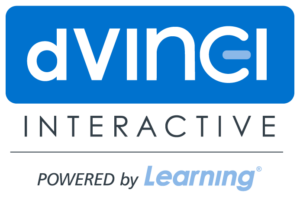How To Develop Accessible Learning Solutions
Today, almost 26% of adults in the United States live with some sort of disability. That is why, more than ever before, it has become critical to develop accessible learning solutions.
Universal design principles and accessibility standards like the Web Content Accessibility Guidelines (WCAG) make it possible to reduce barriers and make content available to a diverse range of learners. These learners can include people with physical disabilities like those who are blind or deaf, and those with cognitive impairments like ADHD, autism, and dyslexia.
The principles also minimize the need for assistive technology, results in products compatible with assistive technology, and makes products more usable for everyone, not just people with disabilities.
While deciding to include accessibility principles in training content, it is essential to note that it is not simply a feature you can easily add after the fact. Designing for accessibility must be carefully thought out and considered from the start.
Web Content Accessibility Guidelines
When developing eLearning modules, educational websites, or other content designed to be accessed only on the web, standards exist to ensure web accessibility. The Web Content Accessibility Guidelines are international standards used by organizations, governments, and individuals to create accessible web-based content.
WCAG consists of four principles:
- Perceivable
- Operable
- Understandable
- Robust
All four of these principles are necessary to create web content that is accessible to all.
Perceivable
The first principle, Perceivable, requires that information and User Interface components be presentable to learners in ways they can recognize; it should be presented in multiple forms.
This principle includes guidelines for presentation forms like alt text, closed captions, and audio descriptions.
Operable
The Operable principle states that User Interface components and navigation cannot require any type of interaction a learner cannot perform on their own.
For example, to be considered operable, designers should ensure that all functionalities can be completed with a keyboard.
Understandable
According to the Understandable principle, learners should be able to understand the information presented and how to operate the User Interface.
To satisfy this requirement, designers must ensure the readability of written text, that it is at the appropriate reading level, and that the HTML code specifies the language. Other considerations include ensuring consistency in navigation and that knowledge checks have enough directions for someone to answer questions confidently.
Robust
The last principle is Robust, which requires content to remain accessible by various user agents even as those technologies advance.
Ultimately, this comes down to the quality of the code. When utilizing tools like Articulate Storyline or Adobe Captivate, you are relying on the tool to output code that satisfies this standard.
Getting Started Designing For Accessibility
Depending on your learning organization, the decision to design for accessibility could impact multiple teams and roles. When adopting an accessibility first approach, it’s important to include team members with the roles and from the teams that will be impacted by this change. In addition, having leadership support and buy-in early in your accessibility journey is essential.
Once you’ve identified your team and have leadership support, the next step is to identify what your minimum accessibility standard will be. Things to consider: your past client requests, the WCAG standards, and any rapid eLearning tool limitations.
Once your minimum accessibility standard for your organization is determined, begin the process of updating your procedures to support them by identifying all the places the change will affect.
For example, storyboard templates might need to be changed to include alt text and closed captioning text. Budgets and estimates will also need to account for the extra time required for testing and writing additional content.
Conclusion
Look at your current learning content. Is it accessible? Is it inclusive? Can you navigate your eLearning with just a keyboard? Try using a free screen reader to see what happens.
Designing for accessibility has become easier than ever before, thanks to well-established standards and rapid advances in learning development tools. It starts by reviewing existing processes and procedures, and then determining how best to put accessibility first in your organization.
Is your organization ready to start designing for accessibility? The key to success is to carefully map out your accessibility plan and include it in your design from the start.

d’Vinci Interactive
d’Vinci Interactive revolutionizes learning experiences and educational websites to achieve extraordinary outcomes for K-12 and adult learners.
Originally published at www.dvinci.com.



















